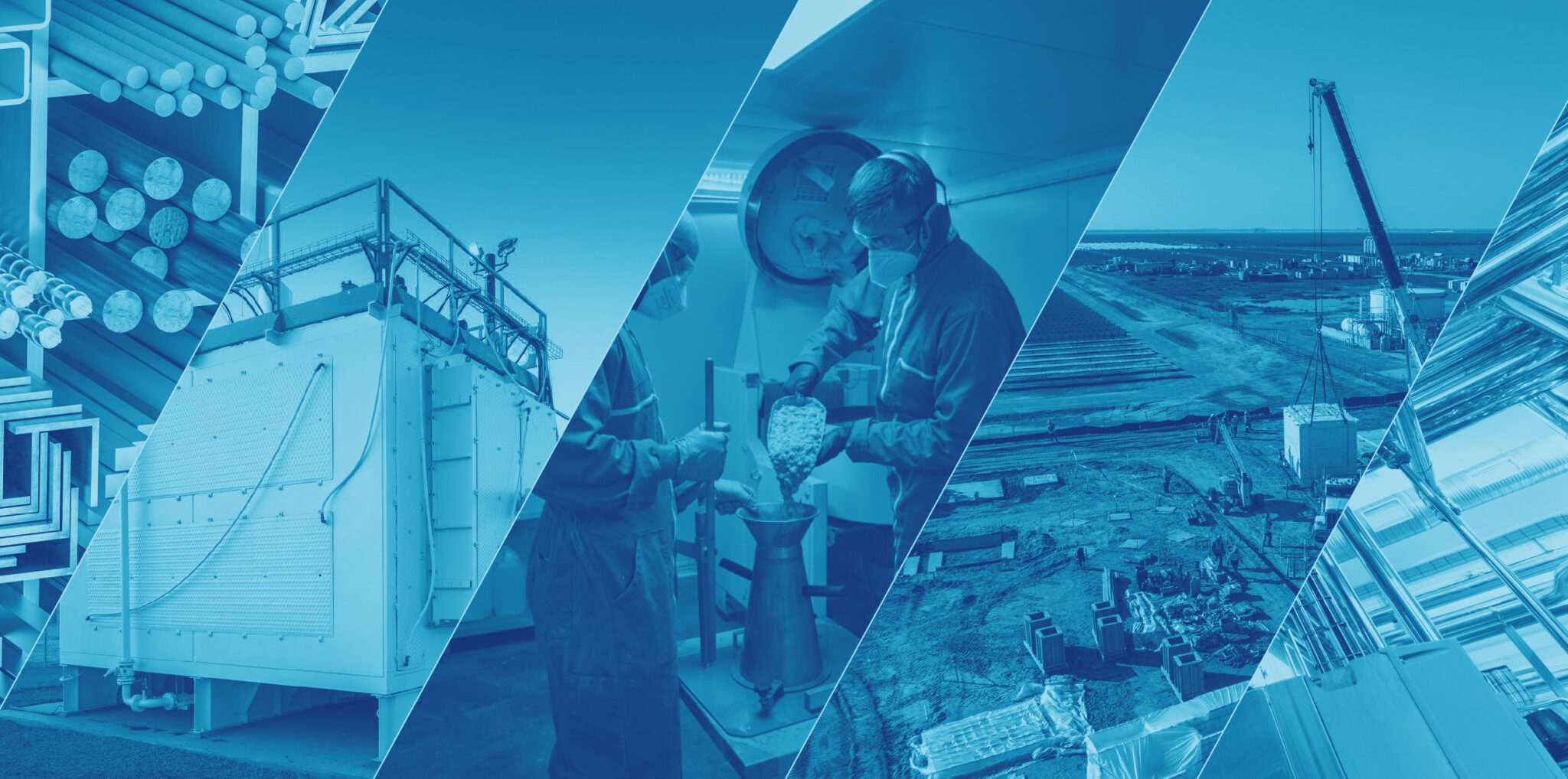This post is the first in a series about the challenges and opportunities facing the manufacturing sector. Manufacturing is one of the five main sectors contributing to today’s global greenhouse gas emissions—what Breakthrough Energy calls the Five Grand Challenges.
Manufactured goods and materials—from the cement in our buildings and steel in our appliances to the clothes we wear and the device you’re using to read this content—are necessary for our daily lives but contribute nearly one-third of global emissions. These emissions arise from the chemistry of the processes used (called process emissions) and the energy that goes into driving them (largely from burning fossil fuels for industrial heat). Achieving net-zero emissions in manufacturing requires eliminating process emissions and utilizing clean energy. When that’s not possible, we need to scale up carbon management technologies. At Breakthrough Energy, we are trying to solve these industrial emissions through manufacturing innovation while maintaining and growing a high standard of living around the world.
Humans use a tremendous amount of manufactured material. There is now more man-made material on the planet than there is biomass. Cement and steel are two of the most emissions-intensive subsectors within manufacturing. Chemicals production (including things like plastics, hydrogen, and fertilizer) and the energy-related and fugitive emissions from oil and gas production, refining, and distribution also contribute significant global emissions.
Manufacturing emissions are often considered among the most challenging to decarbonize due to a variety of factors. These include the maturity of existing commodity markets, regulatory barriers to transition, and the capital intensity of, and significant incumbent investment in, infrastructure.
There are meaningful opportunities to advance promising technologies for each emissions-intensive subsector at the discovery, development, and deployment stages to decarbonize manufacturing. Future posts will dive deeper into these opportunities, but a few examples include:
- Cement – Using non-CO2 raw materials and clean electricity to make cement, using cement and concrete more efficiently, storing CO2 in cement and concrete, and capturing carbon more efficiently.
- Iron and Steel – Using clean electricity and/or hydrogen to make iron and steel and new, low-temperature ways to shape steel parts.
- Chemicals – Using clean hydrogen and CO2 to make chemicals and electrifying production.
- Oil and Gas – Avoiding, converting, or removing methane emissions.
Breaking the emissions problem down into subsectors helps identify important areas of focus for technology solutions, but there are other ways to divide the problem, including by energy and process emissions (as discussed above), end-use (e.g. automotive, construction, textiles, etc.), source (mining, agriculture, oil and gas, or other extractive industry), or greenhouse gas (CO2, CH4, N2O, etc.). Many of the emissions labeled as part of the “Manufacturing” Grand Challenge also interact with other Grand Challenges, such as energy inputs from Electricity and the use of products in Transportation (e.g., fuels), Buildings (e.g., steel and cement), and Agriculture (e.g., fertilizer).
Additionally, there may be future significant emissions sources that aren’t yet represented here. For example, the infrastructure for clean energy—such as solar panels, wind turbines, batteries, and the electric grid—is a growing production area currently reliant on high-emissions manufacturing processes.
Consequently, there are solutions to address manufacturing sector emissions beyond the subsector-specific innovations described above. For example, there are cross-cutting solutions across sectors including:
- Electrification and Process Efficiency – Direct electrification of existing processes (e.g., thermal energy storage or heat pumps for industrial heat); new electrochemical production methods that reduce or eliminate heat needs; new processes that improve overall energy efficiency; and smart/digital technologies that enable system- or facility-wide energy and process optimization.
- Hydrogen – The production of clean hydrogen that can be used across sectors as a feedstock/reagent in production processes.
- Carbon Management – Point source carbon capture of unabated industrial emissions and subsequent utilization as industrial feedstock or permanent storage; direct air capture and other high-quality carbon dioxide removal to address legacy emissions; and atmospheric methane removal.
- Circularity – Any solution that reduces the overall need for raw materials and eliminates waste/byproducts (e.g., redesign, remanufacture, reduce, reuse, recycle).
For every subsector, a combination of these specific and cross-cutting solutions will likely be required to achieve net-zero emissions, especially because these technologies are at different levels of maturity and have different timelines for commercialization and deployment. A variety of other non-technical factors may also play a role, including:
- Geography/natural resources
- Existing and new clean energy infrastructure
- Societal preference/politics
- Cost of capital and availability of project finance
We believe that innovation has a significant role to play in enabling the transition to a clean manufacturing economy. In addition to innovation, policy plays a role in bringing costs down and addressing non-cost barriers to accelerate technology deployment around the world. In the next piece in the series, Breakthrough Energy’s U.S. Policy and Advocacy team will introduce a framework to decarbonize U.S. industry and lay out how smart policy can fuel innovation and lower industrial emissions.





